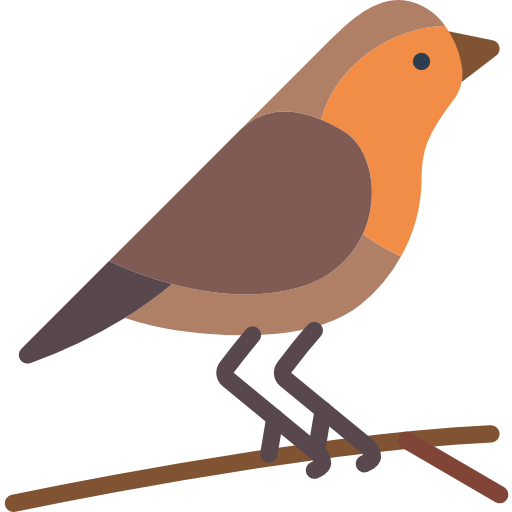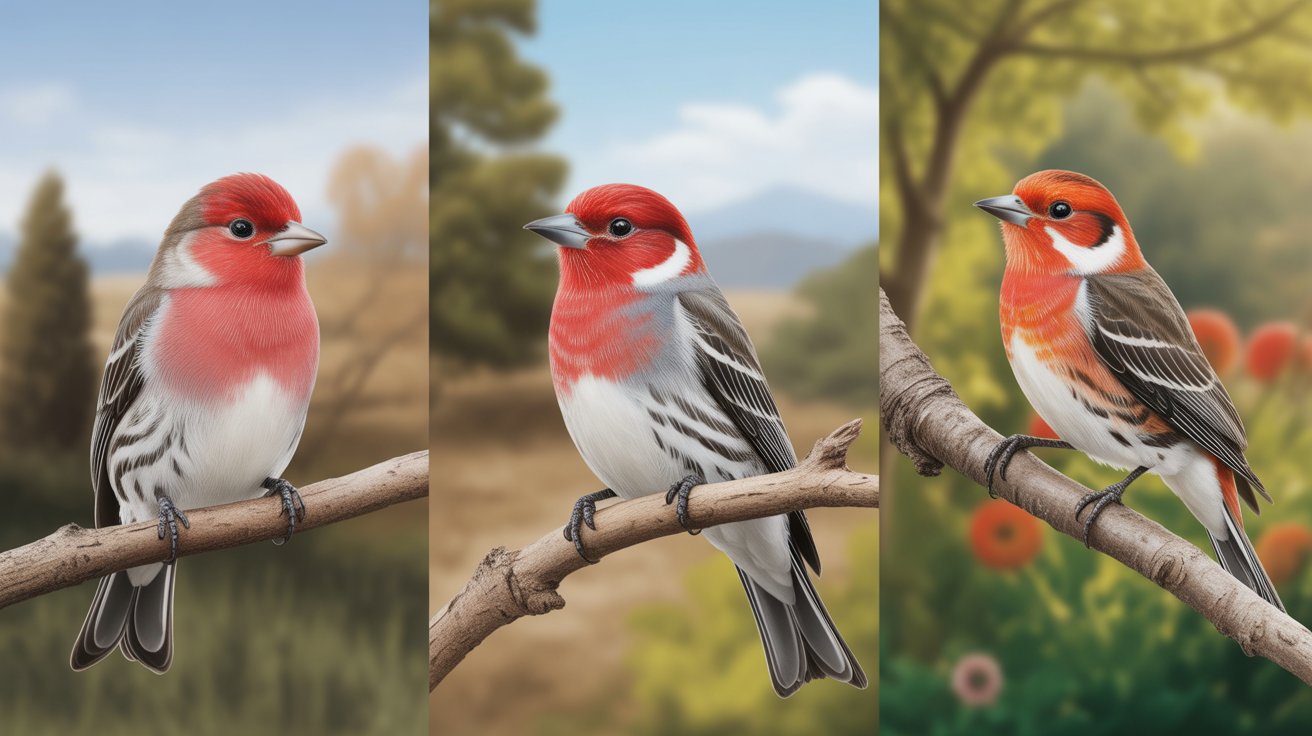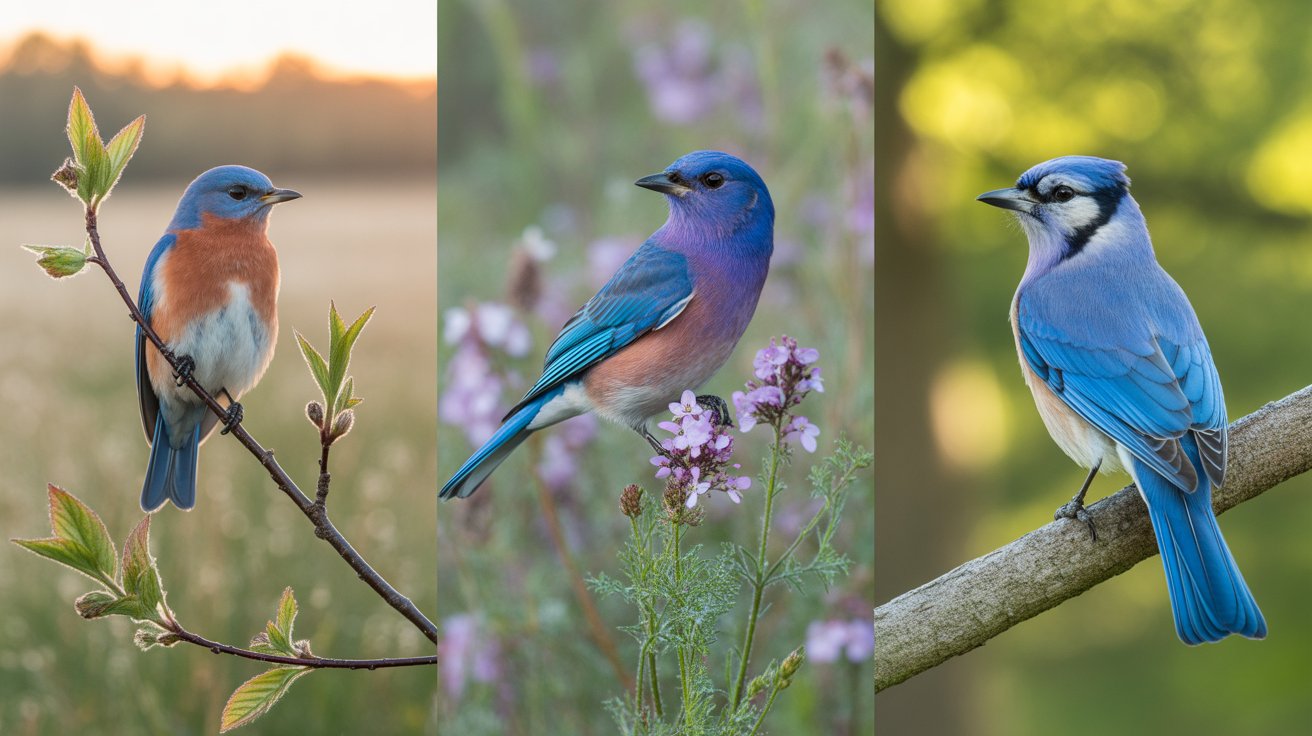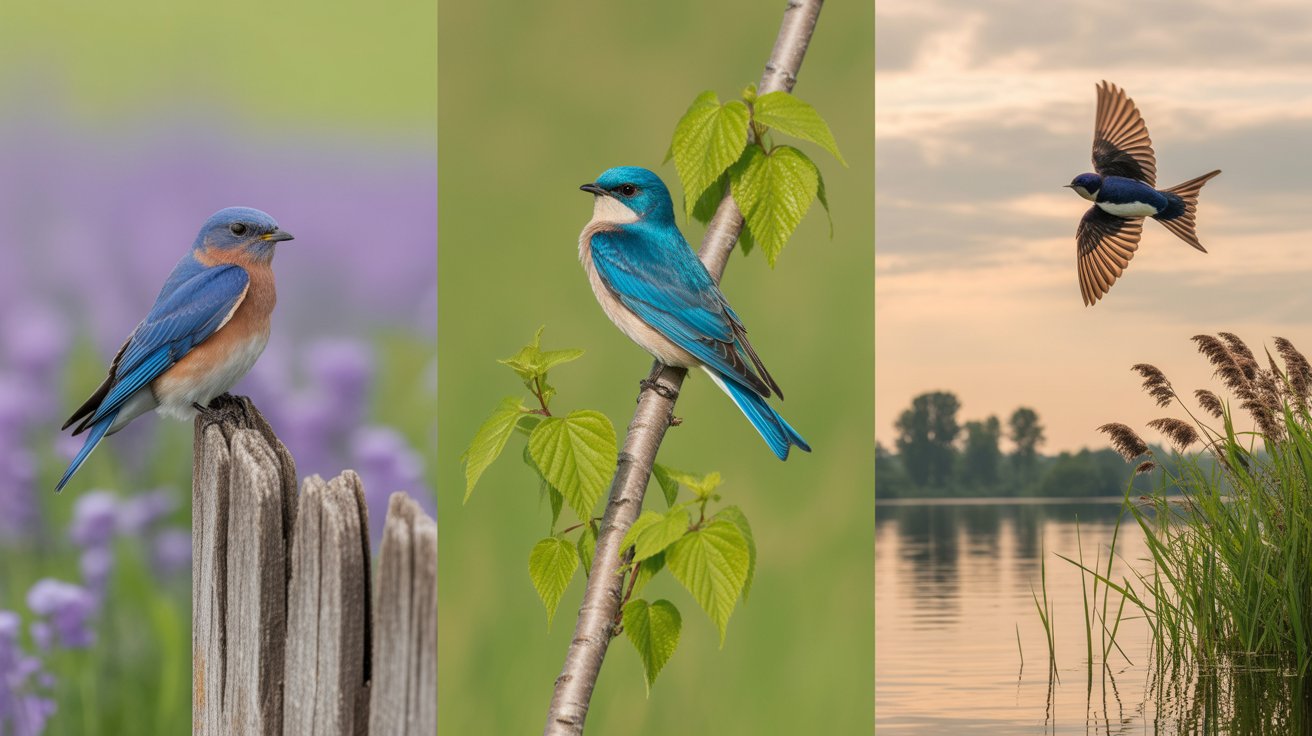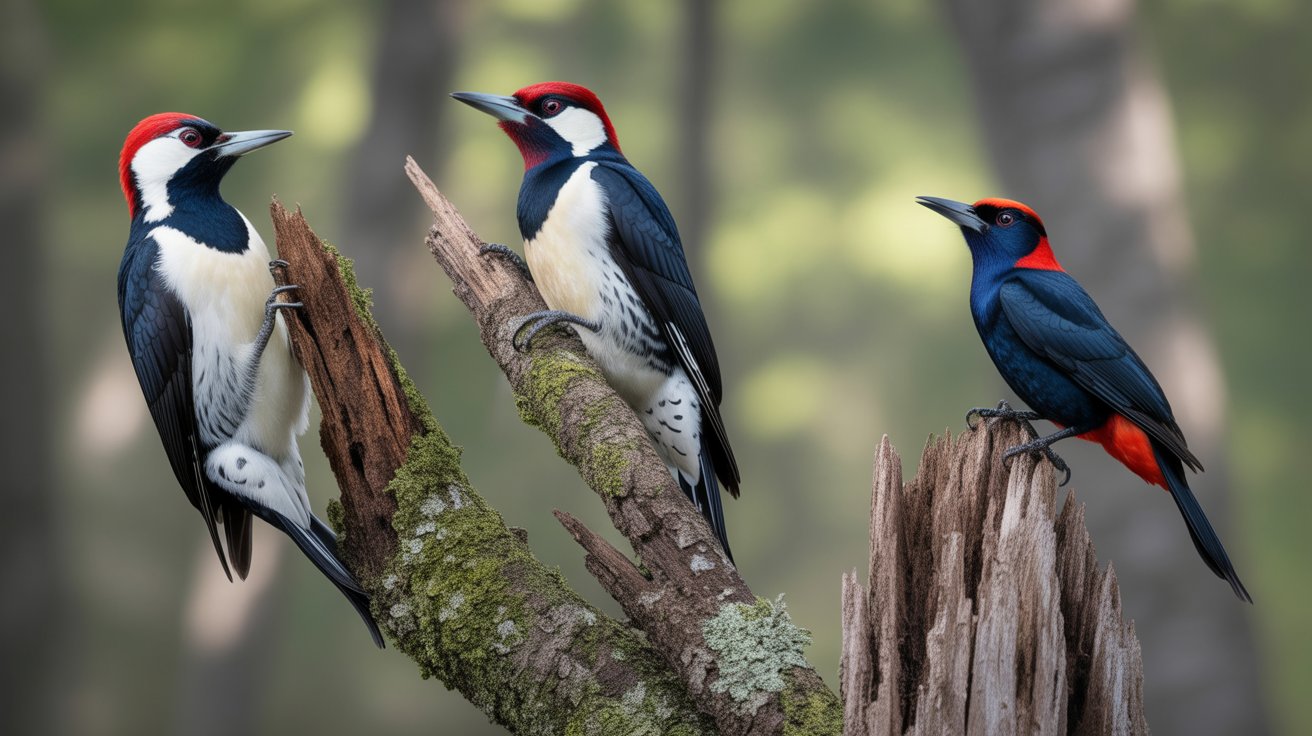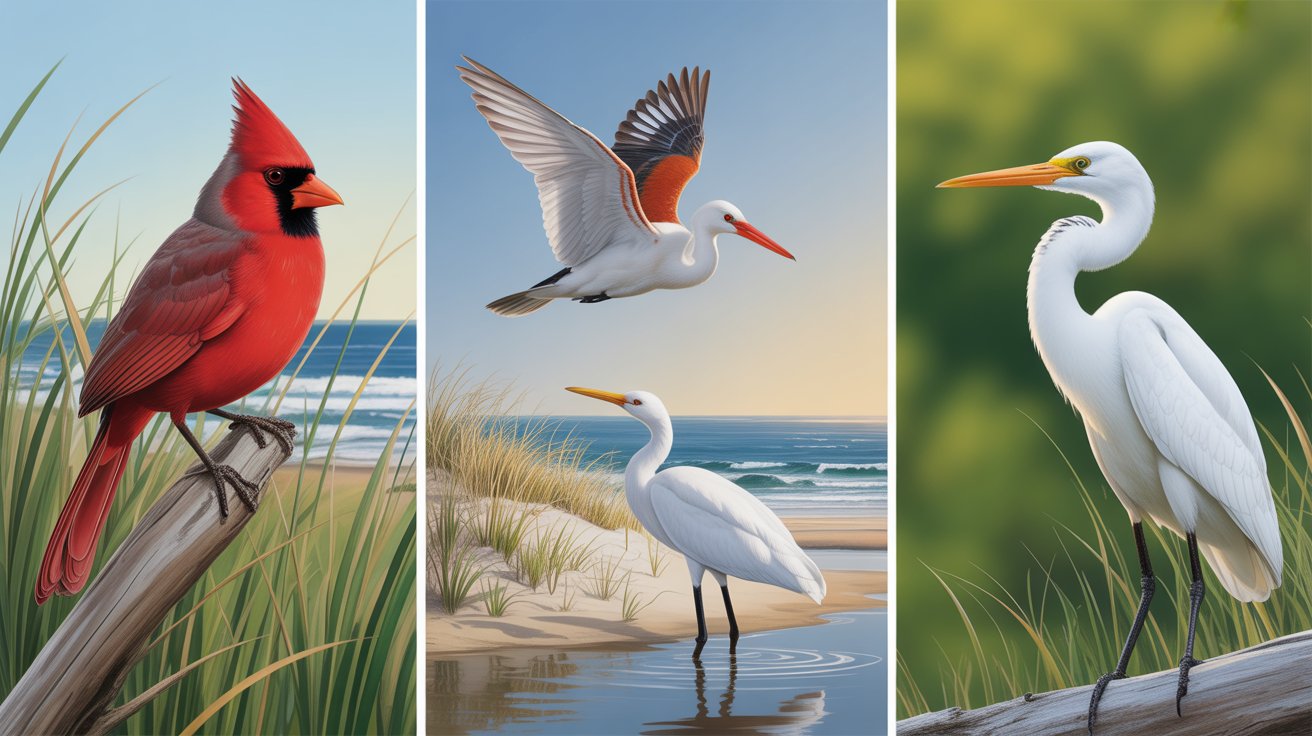Have you ever caught a glimpse of a bird so vibrant it made you stop in your tracks? If you’re drawn to bold and unusual colors in the wild, you’re going to love exploring the world of purple birds. These avian beauties bring a magical touch to forests, wetlands, and even your backyard. With their shimmering feathers ranging from lavender and lilac to deep violet, purple birds are some of the most eye-catching creatures in the bird kingdom.
Many bird watchers and nature lovers are fascinated by purple birds not just because of their color, but also for their unique behaviors, melodic songs, and the mystery they carry. Purple is a relatively rare color in nature, and when it shows up in bird plumage, it often means iridescence, especially under the sunlight. These birds are scattered across the globe—from the lush rainforests of Southeast Asia to the open woodlands of North America.
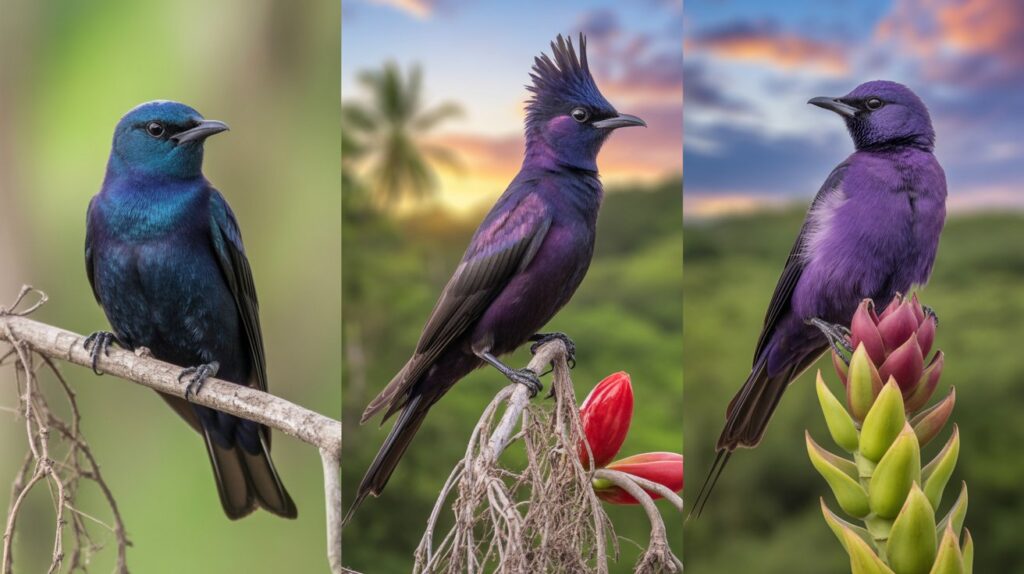
In this article, you’ll discover 13+ stunning bird species that proudly display hues of purple. Whether you’re a casual bird lover or an experienced birder looking to spot something new, these species are bound to capture your imagination. Let’s dive into the dazzling world of purple birds and learn more about these feathered gems.
Contents
13+ Purple Birds Species
Purple Martin
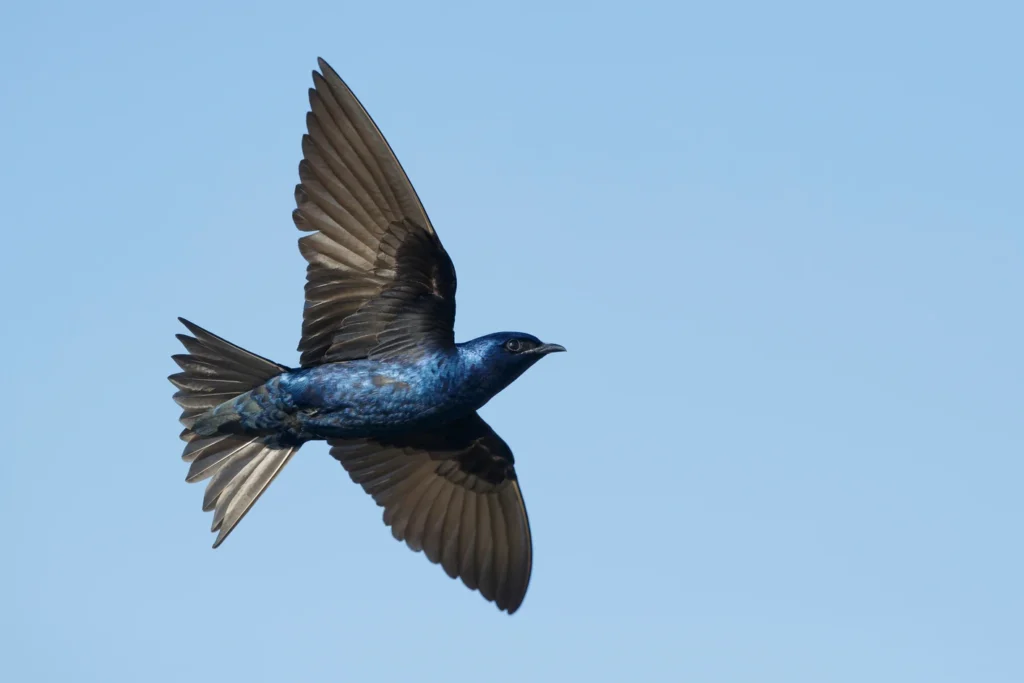
The Purple Martin is North America’s largest swallow and a favorite among backyard birders. Males are deep, glossy purple all over, with a slightly forked tail and broad wings that help them glide effortlessly through the air.
- Scientific Name: Progne subis
- Wingspan: 15.3–16.1 inches (39–41 cm)
- Length: 7.5–8.7 inches (19–22 cm)
- Weight: 1.6–2.1 oz (45–60 g)
They prefer open spaces near water and are commonly seen darting through the sky catching insects mid-flight. Females are more subdued in color with grayish bellies and lighter throats. These social birds often nest in colonies, especially in man-made birdhouses.
Violet-backed Starling
This starling is a brilliant mix of elegance and color. Males shimmer with a bright, iridescent violet on their head, back, and wings, while their bellies remain pure white, creating a sharp contrast.
- Scientific Name: Cinnyricinclus leucogaster
- Wingspan: 12–13 inches (30–33 cm)
- Length: 6–7 inches (15–18 cm)
- Weight: 1–1.2 oz (28–34 g)
Native to Sub-Saharan Africa, the Violet-backed Starling prefers open woodlands and savannas. They feed on fruits and insects and are known for their gentle chirps. Females are brownish with streaked bellies, quite different from the flashy males.
Purple Sunbird
The Purple Sunbird is a tiny but dazzling bird found across South and Southeast Asia. Males in breeding plumage are a shiny bluish-purple, especially stunning in bright sunlight.
- Scientific Name: Cinnyris asiaticus
- Wingspan: 5.5–6 inches (14–15 cm)
- Length: 3.1–3.9 inches (8–10 cm)
- Weight: 0.3–0.4 oz (8–11 g)
They are nectar feeders, often hovering around flowers much like hummingbirds. Females are olive-yellow and not as vivid. Purple Sunbirds are common in gardens, parks, and urban areas, making them a familiar sight.
Purple Grenadier
This finch species is a favorite among bird enthusiasts for its vibrant plumage. Males are a striking reddish-purple with a bright blue mask around the eyes and face.
- Scientific Name: Uraeginthus ianthinogaster
- Wingspan: Approx. 7–8 inches (18–20 cm)
- Length: 5.5 inches (14 cm)
- Weight: 0.4–0.5 oz (11–14 g)
Found mainly in East Africa, Purple Grenadiers prefer dry savannas and shrublands. Their diet includes seeds, grains, and insects. They are shy but can be seen near water sources during early mornings and late afternoons.
Violet-crowned Woodnymph
This hummingbird lives up to its enchanting name. Males boast an iridescent green body with a violet crown and throat, shimmering beautifully in tropical forests.
- Scientific Name: Thalurania colombica
- Wingspan: 4.5–5 inches (11.5–13 cm)
- Length: 3.1–4.3 inches (8–11 cm)
- Weight: 0.1–0.2 oz (3–6 g)
Native to Central and South America, these birds are agile fliers, hovering near flowers to feed on nectar. They also eat small insects for protein. Females are less colorful but still display elegance.
Purple Gallinule
The Purple Gallinule is a marsh bird with feathers in a mix of purple, blue, and green—almost like a living rainbow. Its bright red and yellow beak adds to its vivid look.
- Scientific Name: Porphyrio martinicus
- Wingspan: 20–22 inches (50–56 cm)
- Length: 10–15 inches (25–38 cm)
- Weight: 5–10 oz (142–284 g)
You can spot this bird in wetlands and swamps throughout the southeastern U.S., Central America, and parts of South America. They walk gracefully on lily pads with their long toes and are omnivorous.
Purple Honeycreeper
This small tropical bird is a real visual treat. Males are violet-purple with black wings and a slightly curved beak perfect for sipping nectar.
- Scientific Name: Cyanerpes caeruleus
- Wingspan: Approx. 7 inches (18 cm)
- Length: 4.5 inches (11.5 cm)
- Weight: 0.4 oz (11 g)
Found in the forests of northern South America, Purple Honeycreepers flit among trees in search of nectar and insects. Females are greenish and less striking, making the males stand out even more.
Violet Sabrewing
One of the largest hummingbirds, the Violet Sabrewing is an absolute stunner. Males feature deep purple feathers with metallic green touches on the back and wings.
- Scientific Name: Campylopterus hemileucurus
- Wingspan: Approx. 7.9 inches (20 cm)
- Length: 5.1–5.9 inches (13–15 cm)
- Weight: 0.3–0.4 oz (9–11 g)
These birds are found in the mountain forests of Central America. They’re frequent visitors to flowering plants and feeders. Their broad wings help them hover steadily while feeding.
Purple Roller
The Purple Roller is a chunky bird with streaked brown plumage that has hints of purplish tones, especially under certain lighting conditions.
- Scientific Name: Coracias naevius
- Wingspan: 17–19 inches (43–48 cm)
- Length: 14 inches (35 cm)
- Weight: 4.2–5.6 oz (120–160 g)
Native to sub-Saharan Africa, they prefer dry woodlands and savannas. Their call is loud and raspy, and they’re often seen perched high, scanning for insects and small reptiles.
Splendid Starling
With dazzling iridescence, the Splendid Starling shines in multiple hues including deep blue, violet, and green. It’s a visual marvel under sunlight.
- Scientific Name: Lamprotornis splendidus
- Wingspan: Approx. 14–15 inches (35–38 cm)
- Length: 9 inches (23 cm)
- Weight: 2.1–2.5 oz (60–72 g)
Found across tropical Africa, this bird thrives in forests and farmlands. They feed on fruits, insects, and grains and are often seen in flocks.
Purple Swamphen
The Purple Swamphen is a large, water-loving bird with vivid purple-blue plumage and a bright red bill and frontal shield.
- Scientific Name: Porphyrio porphyrio
- Wingspan: 39–47 inches (100–120 cm)
- Length: 18–20 inches (45–50 cm)
- Weight: 1.8–2.6 lb (0.8–1.2 kg)
They inhabit freshwater marshes, reed beds, and wetlands in Europe, Africa, and Asia. These birds are strong swimmers and walkers, often spotted among tall grasses.
Raggiana Bird-of-Paradise
While not entirely purple, the Raggiana Bird-of-Paradise often displays iridescent violet-purplish hues among its flamboyant feathers.
- Scientific Name: Paradisaea raggiana
- Wingspan: 17 inches (43 cm)
- Length: Up to 13 inches (33 cm), longer with ornamental feathers
- Weight: 4.2–6.7 oz (120–190 g)
Native to Papua New Guinea, males perform elaborate dances to attract mates. Their color range varies with lighting, adding to their mystique.
White-collared Yuhina
Though not fully purple, the White-collared Yuhina often shows a wash of purple-gray on its back and head, especially in Himalayan light.
- Scientific Name: Yuhina diademata
- Wingspan: Approx. 7.5 inches (19 cm)
- Length: 4.7 inches (12 cm)
- Weight: 0.3–0.5 oz (9–14 g)
Found in the montane forests of South Asia, these active birds forage in flocks and emit high-pitched calls. Their plumage blends beautifully with misty forest surroundings.
FAQs
1. Why are purple birds rare?
Purple feathers are often a result of iridescence rather than true pigmentation, making this color less common in birds.
2. Where can I find purple birds?
Many purple birds are found in tropical regions, wetlands, and forests across Asia, Africa, and the Americas.
3. Are male purple birds more colorful than females?
Yes, in many species males are more vibrant to attract mates, while females tend to have muted colors for camouflage.
4. What do purple birds eat?
Their diet varies by species and includes nectar, fruits, seeds, insects, and small aquatic life.
5. Can I attract purple birds to my backyard?
Yes! Offer native flowering plants, nectar feeders, or birdhouses depending on the species in your region.
Conclusion
Purple birds are nature’s showstoppers. Whether you’re looking at the shimmering feathers of a hummingbird or the bold contrast of a starling, these birds captivate the eyes and soul. From tropical rainforests to backyard feeders, they represent beauty, diversity, and the wonder of avian life. You now know some of the most striking purple bird species from around the world, each with unique traits and habitats.
As you observe birds in the wild or create a bird-friendly garden, keep an eye out for flashes of violet. With the right knowledge and a bit of patience, spotting one of these dazzling species can be a truly rewarding experience.
